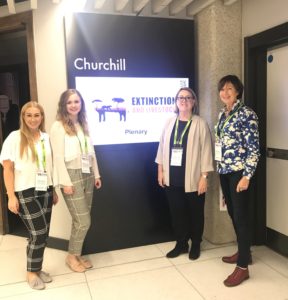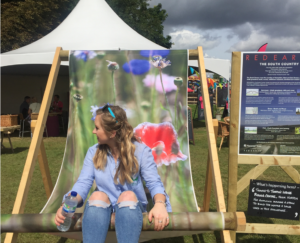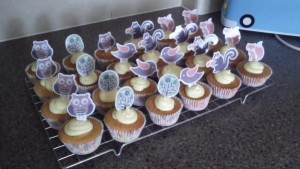
August 2021
Elephants - megagardeners of the forest
Iconic Species essential for biodiversity needs our help
By Rhonda Smith, Director, Minerva UK
There is no species on earth that captures our imagination and awe quite like the elephant – and there are many initiatives in train world-wide and here in the UK to ensure that we provide this iconic animal with the environment and respect it deserves in Africa and Asia.
For those recently travelled to London you may have had the delight of encountering a herd of elephants in one of the Royal Parks. Carved in Tamil Nadu, southern India, these sculptures have been delighting visitors thanks to the work of the Real Elephant Collective, the charity Elephant Family (founded by the Duchess of Cornwall’s brother Mark Shand) and Co-existence. The aim is to demonstrate the importance of the human race being able to live safely and fruitfully side-by-side with all other species.
But the Asian elephant is under particular threat as a species due to human greed, subjected to torture and degradation for profit and for our pleasure as tourists and for use in religious ceremonies.
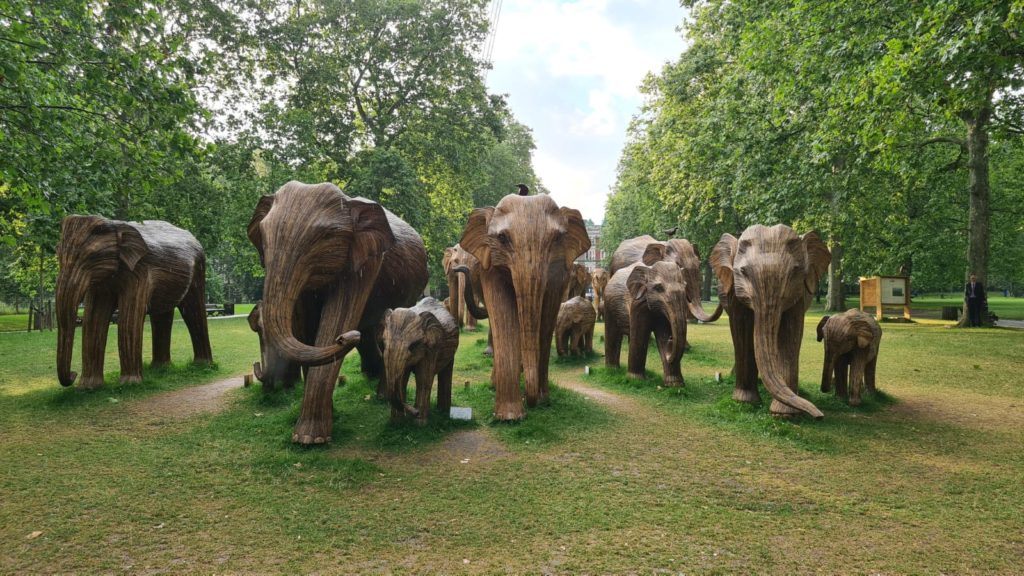
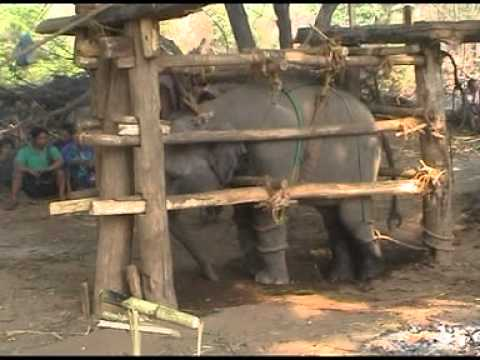
Baby and young elephants are taken from the wild with their adult protectors often killed in the process, and then subjected to the most horrific cruelty and torture in a process known as ‘pajan’ to break their spirit. Many die in this process or die very young. Stabbed in sensitive parts of the body, this torture continues throughout their lives, reminding them of the torture they experienced when young.
The aim of this process is to make these elephants ‘safe’ for humans to be around and take pleasure in activities such as rides, taking selfies and playing football. Many UK tourists book package holidays in south-east Asia that include elephant experiences without realising the horrific process elephants continue to endure simply for that moment of ‘pleasure’.
In the UK, legislation is being introduced – the ‘Animals Abroad’ bill – in the autumn to make it illegal for firms to promote or advertise holidays and experiences that are known to subject elephants to such unethical treatment, and set a tariff of penalties that will dissuade. Let’s hope it gets through quickly.
There is some good news. Elephants throughout the world are now being moved out of zoos and into more appropriate surroundings such as safari parks, a new bill is going through Parliament to recognise the ‘sentience’ of all animals, and there is considerable support in India to stop the practice of ‘pajan’ on elephants to make them safe for religious purposes.
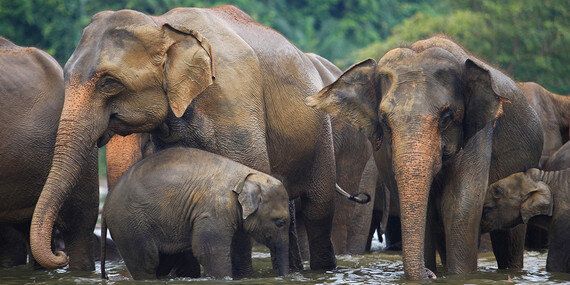
What can we all do in the meantime? Think carefully about your travel choice (when you can again!), avoiding both at the point of booking and at your destination any location that makes close elephant encounters available. Choose only verified sanctuaries.
Visit Save the Asian Elephant (STAE) website www.stae.org, where you will find more information. Be aware that if you do visit STAE’s website you will be presented with graphic and upsetting images of elephants. However, it is important to educate ourselves about this tragic situation.
Together with STAE, Minerva urges everyone to act now and show the strength of public support for this new law by signing STAE’s petition on change.org which already has in excess of 1 million signatures https://bit.ly/3yzveTO .
January 2021
Investigating the effectiveness of biodegradable and compostable packaging
The Citizen Science Home Composting Experiment
By Virginia Neal, Project Manager, Minerva UK
Most of my work for Minerva over the past three years has involved working on the EU H2020 funded BIOVOICES project. One of the aims of the project is to raise awareness and increase knowledge about bio-based products and I have discovered that the debate about the environmental benefits of using bio-based products is extremely interesting and quite complex. There are now so many bio-based products available, from dog poop bags to food packaging, all being marketed to highlight their ‘green credentials’ and biodegradability.
This all sounds plausible and positive but as a consumer I am concerned about the reality of the situation – whether what I am being sold really will have a positive effect on the environment, or if these products just reflect businesses climbing onto the green bandwagon and effectively greenwashing consumers?
Are these items really home compostable? Do they breakdown with no negative effect on the environment? Are these materials really the answer to our waste crisis or do they just encourage us to use more? Will these items only breakdown under industrial composting conditions? I could go on….
Whilst carrying out some research on bio-based plastics I noticed that University College London (UCL) Plastics Innovation Hub were running a nationwide citizen science research experiment to investigate the role and effectiveness of biodegradable and compostable packaging. It is not often that as a citizen I get asked my opinion, so I decided to participate.
The first part of the experiment was a short survey to discover what I think of biodegradable plastics, what I do with them, and if I ever home compost them. As I do home compost my kitchen waste, I was able to move onto the practical part of the experiment where I was asked to place a few biodegradable plastic items in my compost bin, and then report back to UCL about whether they compost or not. It was really easy to participate. I downloaded the App onto my phone which prompted me to photograph my compost bin and the items that I planned to compost, which I then uploaded.
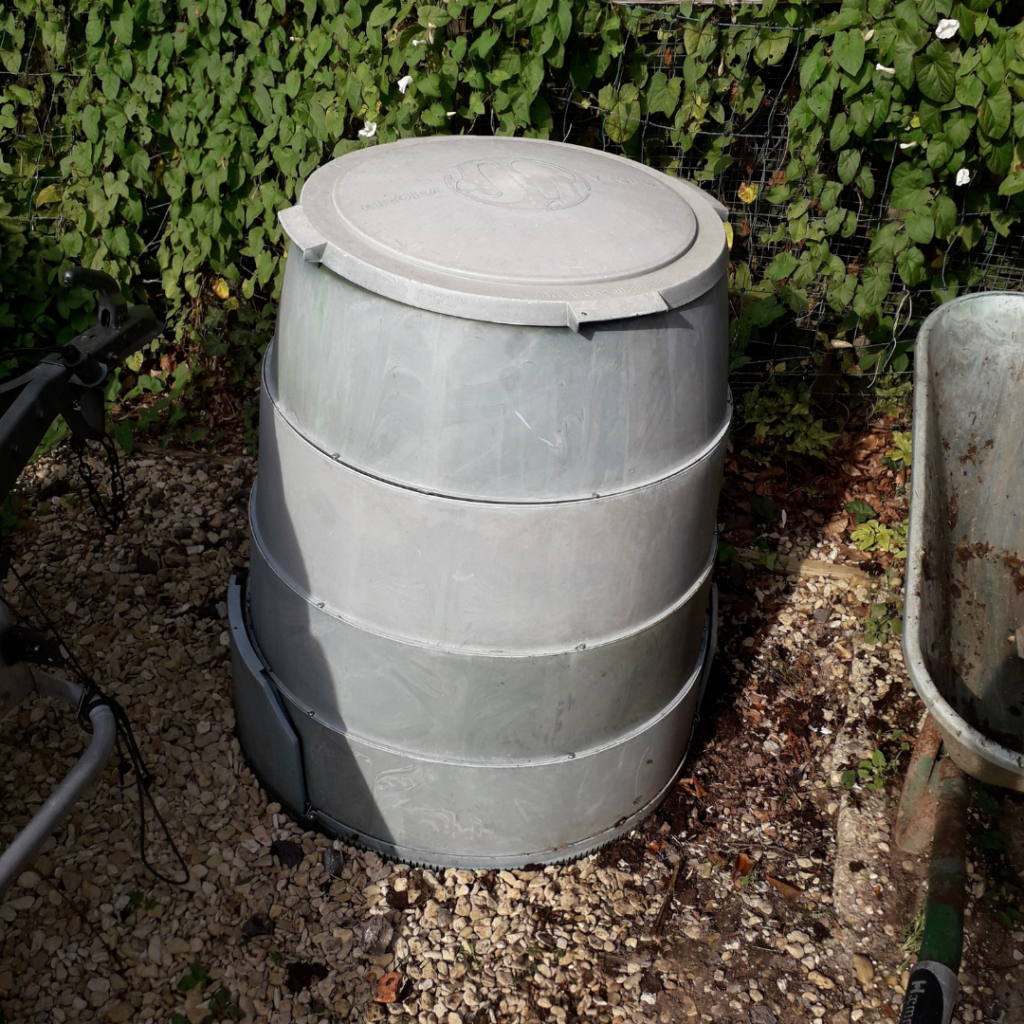
The items that I buried in my compost bin were a coffee cup made by Nature’s Cup where it was written on the cup that it is 100% compostable and 100% biodegradable; an Enviro Lid which again stated that it is 100% compostable; a Percol coffee pack that carries the TUV Austria ok Home Compost label and a few 100% compostable wrappers from The Guardian magazine.
Having buried the items in the compost and uploaded all the required details to the App. I forgot about the experiment until I was reminded that the required composting time had elapsed and that I should search for the items in my compost bin. I dressed myself in my oldest clothes and started to dig out the compost – an extremely smelly and messy process!
The first items I came across were the coffee cup and lid. The cup had almost completely degraded but the lid was 100% intact with no sign of any breakdown. The Percol packaging was more difficult to locate as this had broken down to some extent and was quite fragmented. The Guardian magazine wrappers I retrieved were virtually unchanged with little sign of breakdown, just some discolouration*.
Despite the smell and the mess, I spent a very interesting hour looking at how different things had broken down (or not). I retrieved quite a few tea bags of the pyramid type, many small labels from bananas and rubber bands from herbs and spring onions that had found their way into the bin. In general, many of the 100% compostable bags and magazine wrappers were still pretty intact.
The exercise confirmed for me that there is still a long way to go to ensure that as a consumer I can begin to trust the messaging around compostable and biodegradable items. I personally need to feel more confident that the materials I am being encouraged to introduce into my home compost system, that will end up on my vegetable garden and ultimately in my food, are indeed safe. The introduction of additional, often complex materials to our waste system that is not yet designed to cope with them, would seem to be misguided and could result in additional negative effects on the environment.
However, if the messaging sent out is honest and straightforward, there are opportunities for bio-based products to have a positive impact on the environment. More research is required about the end-of life options for these materials and the investment in infrastructure required to deal with them before they are made more widely available.
The UCL Big Compost experiment is ongoing and everyone is encouraged to participate. To find out more visit https://www.bigcompostexperiment.org.uk
*Interestingly, I have noticed that The Guardian no longer uses the ‘compostable’ wrapping for their magazines and have changed to using paper which is widely recyclable through most local authority systems – much simpler.
September 2020
Managing the food waste mountain
Cakes with Secret Ingredients from Aubergine to Zucchini by Kate Saunders
(Blackberry Cottage 2018)
By Amanda Beard, Account Manager, Minerva UK
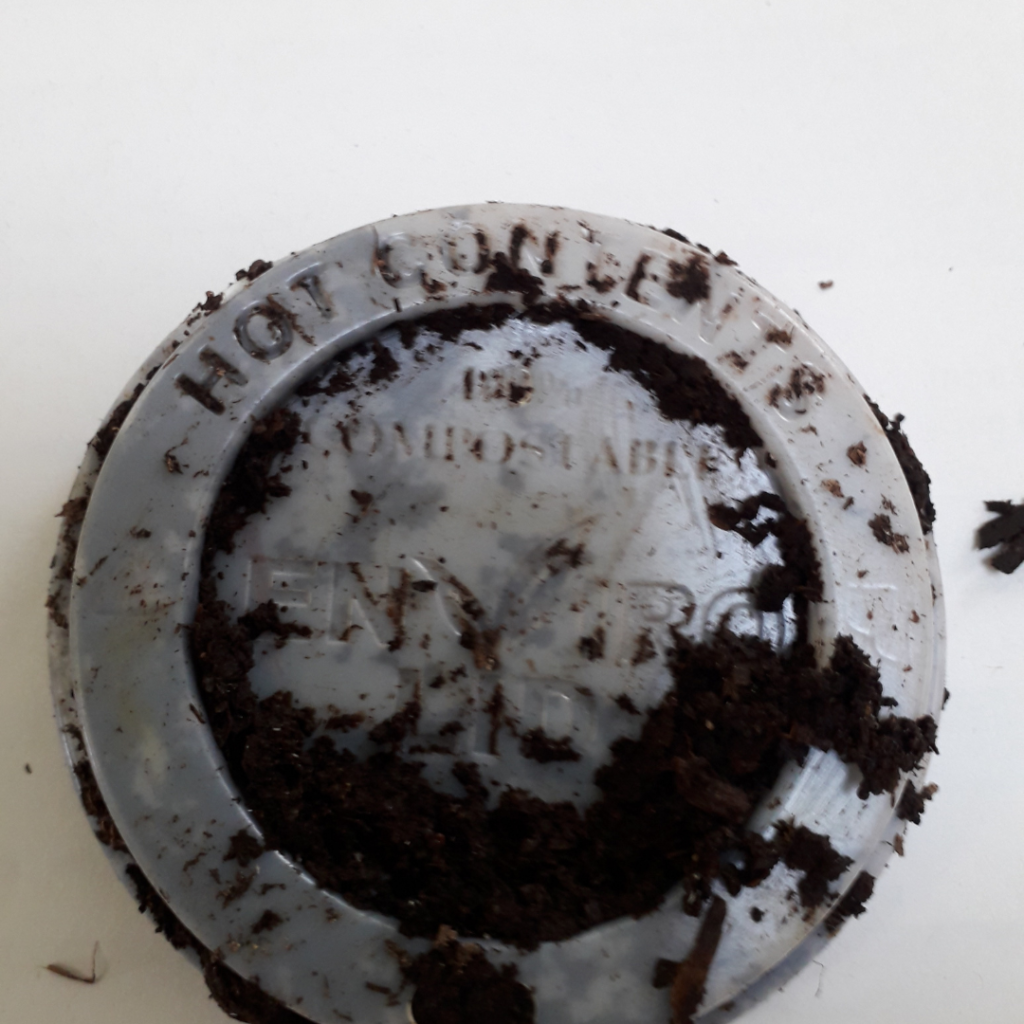
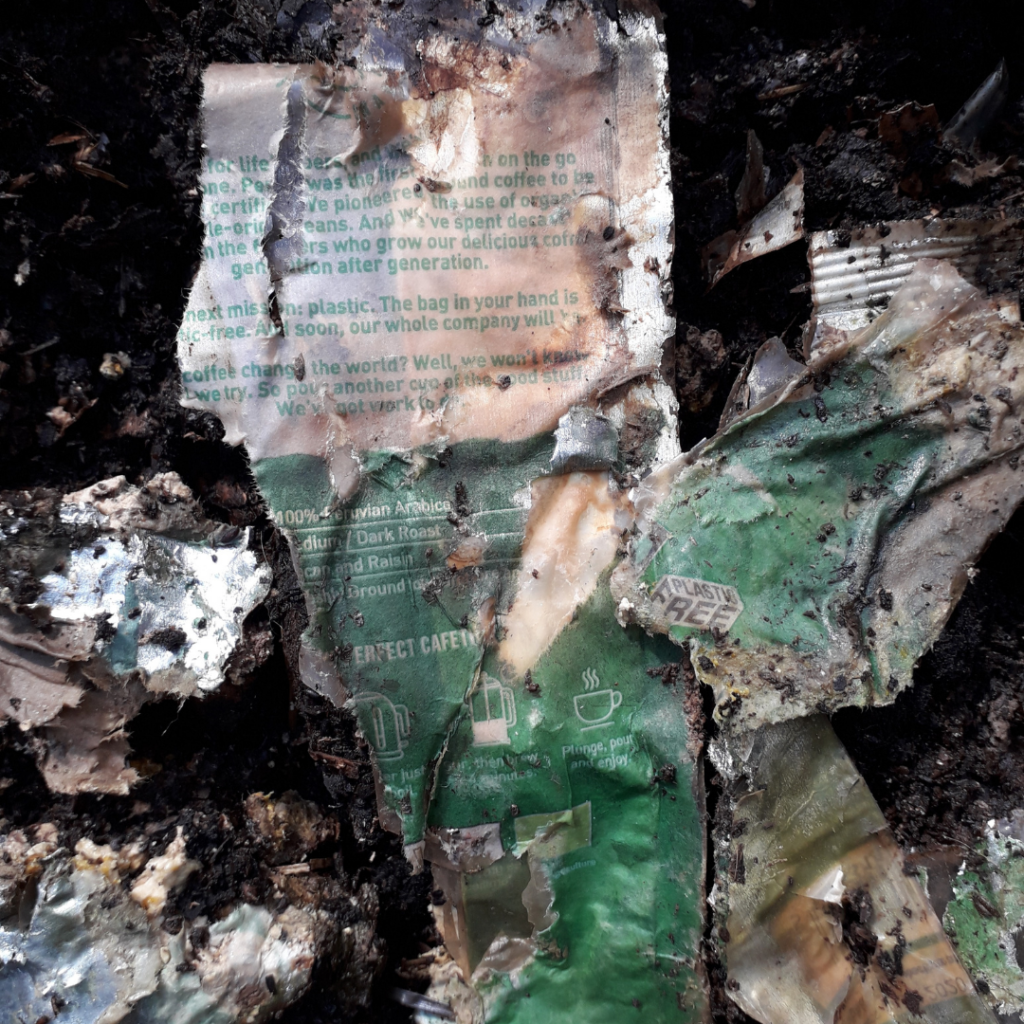
With over 4.5 million tonnes of edible food wasted from UK homes alone every year [1], such waste is not only a monetary issue but also a planetary one. Whilst the initial impact of lockdown seemed to have a positive effect in driving down the percentage of waste generated, with a third less food being wasted than usual [2] , it is vital that these changes in behaviour become the norm. Only then, will we be able to measure a permanent positive impact on our environment.
Lockdown has also seen more of us growing our own and as a keen gardener and veg grower myself, I have been delighted with my crops thus far. However, I am now faced with a glut of courgettes, beans and tomatoes which I do not want to waste and contribute to the food waste mountain.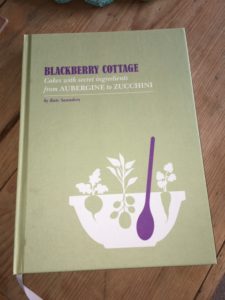
Having topped up my freezer, made copious amounts of soup and tried preserving and pickling, I wanted to find an alternative way to use my surplus stock. I remembered meeting Kate Saunders at a local food network event a couple of years ago, owner and founder of Blackberry Cottage who, was in the process of writing her first cookbook.
I am so pleased to have discovered this brilliantly innovative book! I love flicking through the pages and trying out the recipes. Literally an A-Z of over 100 recipes, using 27 different types of vegetables from aubergine and Jerusalem artichoke to tomato and sweet potato, each ‘secret ingredient’ is used to produce a variety of delicious cakes, cookies, ice creams and jams. Additionally, the book provides confidence to the reader to experiment further with different combinations.
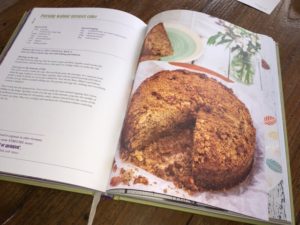 Beautiful photography accompanies the easy to follow step-by-step recipes to make great tasting healthy cakes and treats for all to enjoy. My favourite so far is the Zucchini and Chocolate loaf – a tasty, moist cake which the whole family love!
Beautiful photography accompanies the easy to follow step-by-step recipes to make great tasting healthy cakes and treats for all to enjoy. My favourite so far is the Zucchini and Chocolate loaf – a tasty, moist cake which the whole family love!
Kate’s book also provides the reader with useful tips and interesting facts – did you know that according to archaeologists the garden pea has been around since 4800 BC or that the name pumpkin comes from the Greek word “pepon” meaning ‘large melon’?
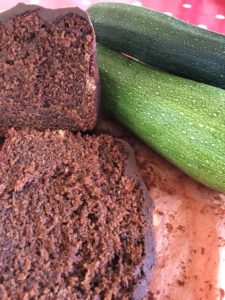 Cakes with Secret Ingredients from Aubergine to Zucchini is now my ‘go to’ reference book for inspiring and healthy home bakes. It’s a definite must for veg growers, bakers and families alike who want to use up their surplus produce and reduce their food waste.
Cakes with Secret Ingredients from Aubergine to Zucchini is now my ‘go to’ reference book for inspiring and healthy home bakes. It’s a definite must for veg growers, bakers and families alike who want to use up their surplus produce and reduce their food waste.
To find out more about Blackberry Cottage and to purchase Kate’s book visit www.blackberrycottagefayre.co.uk
[1] https://www.lovefoodhatewaste.com/keepcrushingit
[2] https://wrap.org.uk/sites/files/wrap/Citizen_responses_to_the_Covid-19_lockdown_0.pdf
Flightless birds, the smallest dinosaur, dolphins, whales, and eco-sanctuaries
A trip of a lifetime to witness New Zealand’s efforts to re-establish its natural and rich biodiversity
By Rhonda Smith
At the end of the twentieth century New Zealand (NZ) faced up to the fact that despite being one of the last places on earth to be settled by humans, it has one of the worst records of indigenous biodiversity loss. The country’s long isolation and slow evolution resulted in its indigenous plants and animals being especially vulnerable to change, such as the arrival of settlers and the exotic species they brought with them.
Importantly, the country decided to act urgently, determinedly and in the long term to re-establish as much of that biodiversity as possible and ensure no further loss.
One of the key drivers for this ‘re-setting’ of national priorities and action came from a 1997 study that estimated that the total annual value provided by NZ’s indigenous biodiversity far exceeded the country’s GDP (Gross Domestic Product) – 230 billion NZ dollars versus 84 billion (1994 figures). The direct and indirect value of land and marine based ecosystems and services – agriculture, horticulture, timber, fishing – were included in this estimate, together with NZ’s ‘clean and green’ environment attracting investors, innovators as well as tourists to this unique and diverse land.
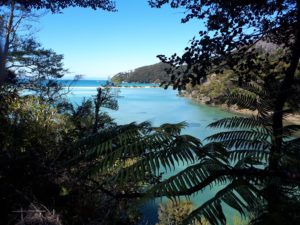 New Zealanders knew that to maintain and promote their country’s green image and save its internationally renowned unique biodiversity, fine words and written policies had to be converted into actions, implemented and supported over time – creating a new reality which would inevitably cause significant disruption along the way. Anchoring actions to the Maori holistic view, linking people and all living and non-living things via the union of Ranginui (the sky father) and Papatuanuku (the earth mother), has underpinned the country’s bicultural approach to biodiversity management.
New Zealanders knew that to maintain and promote their country’s green image and save its internationally renowned unique biodiversity, fine words and written policies had to be converted into actions, implemented and supported over time – creating a new reality which would inevitably cause significant disruption along the way. Anchoring actions to the Maori holistic view, linking people and all living and non-living things via the union of Ranginui (the sky father) and Papatuanuku (the earth mother), has underpinned the country’s bicultural approach to biodiversity management.
So how is NZ doing? As an extremely lucky tourist, I was able to travel to this unique country in early 2020 and see for myself, fulfilling a lifetime’s ambition based on a love of horses, whilst also meeting up with my daughter, who was working in Western Australia. With four weeks at our disposal, both North and South Islands were on the agenda, but hard choices had to be made every day.
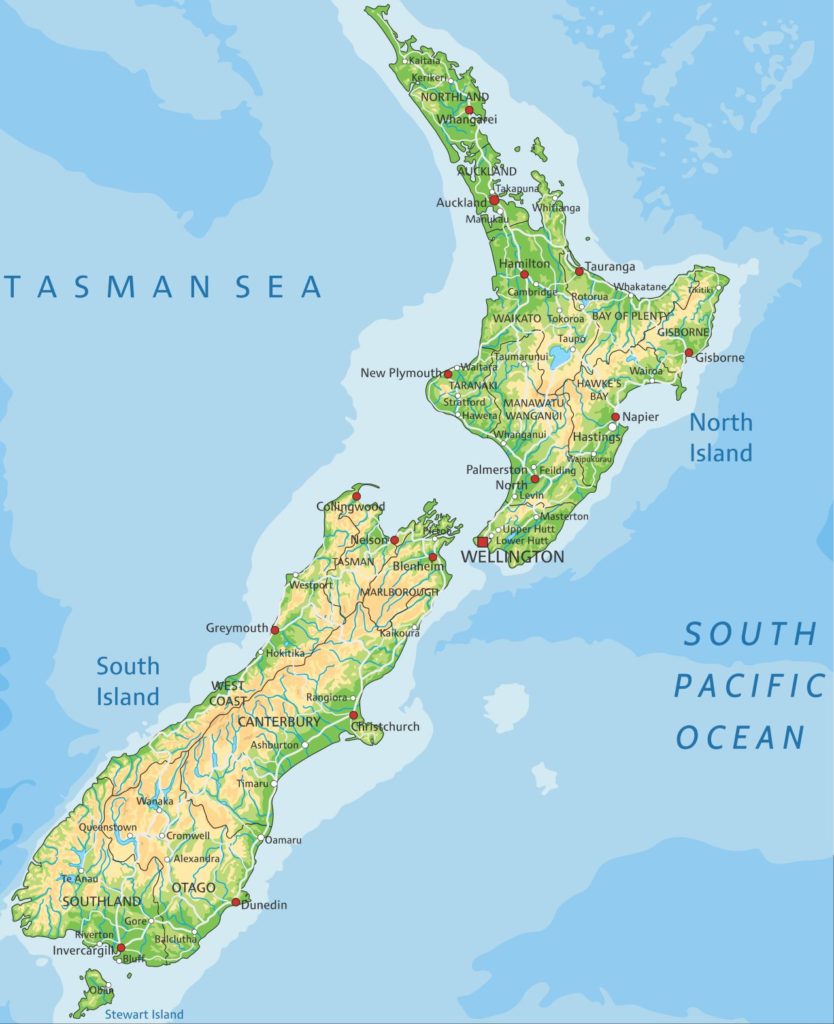
We travelled from Auckland and Waehiki Island taking in the wineries, north to the Bay of Islands and Whangarei, historic site of the Waitangi Treaty of 1840 between the British Crown and Maori Chiefs, back down to Hamilton/Cambridge home of the thoroughbred, and Rotorua with its mineral pools and spa, and then on to a not-so-windy Wellington with its magnificent views.
Taking the ferry on a sunny and calm day, we crossed Cook Strait to Picton, traveling west to Abel Tasman (for kayaking, hiking and horse-riding) before embarking onto the east coast train to Kaikoura and a stopover for whale watching and hiking. Back on the train to Christchurch to witness on-going re-development, then south to the Otago Peninsula. A luxury stopover at Lanarch Castle and its stunning gardens, plus hikes with remarkable flora, fauna and birdlife, was followed by a road trip via the Catlins to the Fjordlands with the magnificent Milford (with access just reopened due to landslides) and Doubtful Sounds, plus the magical glow-worm caves of Manapouri.
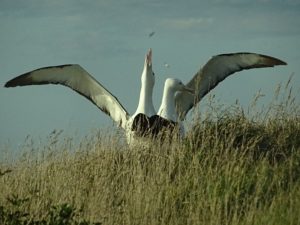 The biodiversity of land and marine life we encountered on our travels was simply amazing. Sealions – massive bulls and mums with young ones – pulled up on the sands of empty beaches following their morning fishing routine; stately albatross (from Royal to Buller’s) courting on land and flying solo across the oceans; curious nocturnal Kiwi in darkened surroundings taken from the wild as eggs to ensure their survival (and against intuition); large and small pods of acrobatic dusky and common dolphins; agile seals sunning themselves on cliffs and rocks; sperm whale encounter watching that huge tail ‘dive, dive’; falling in love with the songs and sights of the wattled Tui, Bellbird, Saddleback, Kaka and friend of the hiker, the Fantail; wondering at the flightless Takahe and Pukeko; creeping up on the rare yellow-eyed penguin and counting in to shore at dusk the Little Blue Penguins – plus enjoying the mammal and predator free environments of many islands and the eco-sanctuary that is Zealandia, home to the smallest surviving dinosaur, the Tuatara.
The biodiversity of land and marine life we encountered on our travels was simply amazing. Sealions – massive bulls and mums with young ones – pulled up on the sands of empty beaches following their morning fishing routine; stately albatross (from Royal to Buller’s) courting on land and flying solo across the oceans; curious nocturnal Kiwi in darkened surroundings taken from the wild as eggs to ensure their survival (and against intuition); large and small pods of acrobatic dusky and common dolphins; agile seals sunning themselves on cliffs and rocks; sperm whale encounter watching that huge tail ‘dive, dive’; falling in love with the songs and sights of the wattled Tui, Bellbird, Saddleback, Kaka and friend of the hiker, the Fantail; wondering at the flightless Takahe and Pukeko; creeping up on the rare yellow-eyed penguin and counting in to shore at dusk the Little Blue Penguins – plus enjoying the mammal and predator free environments of many islands and the eco-sanctuary that is Zealandia, home to the smallest surviving dinosaur, the Tuatara.
Travelling onto Queenstown just as the impact of Covid-19 was beginning to affect daily life in NZ, we made a road trip along Lake Wakatipu to the beautiful Glenorchy, where booked horse-riding had been cancelled, practising social distancing as we had throughout the trip due to low numbers of people, coupled with the country’s vast and varied landscapes.
Flights changed, courtesy of Air New Zealand, to expedite my return to UK and Hannah’s to WA and her flying doctor duties, our return across to Christchurch Airport took in expansive and dramatic landscapes via Lindis Pass, Twizel, Lake Pukaki and Burkes Pass.
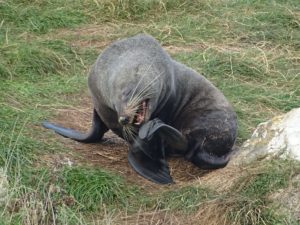 In common throughout our trip were the concurrent themes of (i) eco-tourism, respecting and maintaining the environment through which we were passing from use of resources to waste management, and (ii) celebrating the history and culture of each area and those who live and work there. These two themes were accompanied by the evidence of significant change to re-establish indigent biodiversity we witnessed at every turn not only in terms of flora, fauna, bird and marine life but also in forestry. Native forests, cut down for farmland and fast-growing woodland to serve the construction and allied industries, are being re-established as stands of pine come to maturity and licenses are not renewed. Non-native species are poisoned creating scars on the landscape for now, visible to all travellers by water and land – but an investment for the future beyond price.
In common throughout our trip were the concurrent themes of (i) eco-tourism, respecting and maintaining the environment through which we were passing from use of resources to waste management, and (ii) celebrating the history and culture of each area and those who live and work there. These two themes were accompanied by the evidence of significant change to re-establish indigent biodiversity we witnessed at every turn not only in terms of flora, fauna, bird and marine life but also in forestry. Native forests, cut down for farmland and fast-growing woodland to serve the construction and allied industries, are being re-established as stands of pine come to maturity and licenses are not renewed. Non-native species are poisoned creating scars on the landscape for now, visible to all travellers by water and land – but an investment for the future beyond price.
The progress the country has made in its ambition to be Predator Free by 2050, to ensure the survival of its native species, through collaboration, combined action and central funding is remarkable, with 110 of its islands already pest free. Pest control techniques on the mainland too have become much more effective, with possums, for example, so well controlled that NZ farmers are very close to being free from Bovine Tb.
NZ acted fast and comprehensively to the threat of Covid-19 – just as it has with its biodiversity plans – implementing Level 4 within days, requisitioning hotels and apartment blocks to quarantine returning and departing travellers. As I write this, the country is winning the battle against the virus – and from what I and my daughter experienced through placing the Maori long-term concept of ‘kaitiakitanga’ (guardianship) centre stage, NZ is also beginning to win its battle to re-establish its unique biodiversity.
I hope to go back some day and witness further progress as well as wonder once again at this country’s staggeringly beautiful natural biodiversity and landscapes.

Further reading:
https://www.doc.govt.nz/nature/biodiversity/nz-biodiversity-strategy-and-action-plan/
Pounamu Pounamu (1972) by Witi Ihimaera (short stories)
The Penguin History of New Zealand (2003) by Michael King
All photos © Rhonda Smith
Minerva Team – Recommended Reads
Wilding by Isabella Tree, Picador (2018)
By Virginia Neal
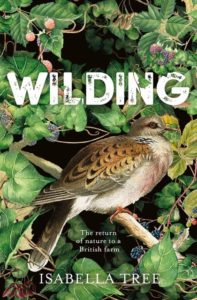 Working at Minerva on the EU funded BIOVOICES project which is focused on development of the bio-based sectors and the BovINE cattle farming network project, has exposed me and my colleagues to a breadth of information about sustainability issues and potential solutions.
Working at Minerva on the EU funded BIOVOICES project which is focused on development of the bio-based sectors and the BovINE cattle farming network project, has exposed me and my colleagues to a breadth of information about sustainability issues and potential solutions.
Challenges from the promotion of bio-based materials to research to help reduce dependence on antibiotics in the food chain illustrate the spectrum of issues at stake. Currently, there is much negative storytelling relating to the state of the environment which is why ‘Wilding’, my recommended read, is unusual. This book carries the positive message that sustainable change can be realised, given the right support coupled with indomitable determination over time.
I was thrilled by the ‘Wilding’ story. It tells of the rewilding of the Knepp Castle Estate in Sussex, owned by the same family for centuries. The estate is situated on marginal farmland on Low Weald Clay that is notoriously difficult to cultivate. The failure of the estate as a farm presents a case study of all the issues that have affected farmers in Europe since ‘Digging for Britain’ during the Second World War. This initiative jump-started the move towards intensive farming made possible by the availability of artificial fertilizers and pesticides, subsequently accelerated by the introduction of the Common Agricultural Policy subsidies in 1973.
It was still possible to dig up hedgerows as late as 1997 in the UK as a result of these ‘intensification’ policies and the use of products directly affecting wildlife diversity.
‘Wilding’ starts with advice from a tree expert on the poor condition of the centuries old Knepp oaks marooned in open farmland, a consequence of efforts to make the farm profitable. The simple description of the damage to the complex and sensitive ecosystem that exists between the tree roots and fungus, allowing both to feed efficiently, is representative of the inevitable wider damage to ecosystems due to human intervention.
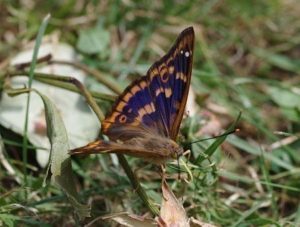 Eventually after trying diverse efforts to achieve profitability the conclusion was reached that the farm was unsustainable and the decision was taken to sell the dairy herds and farm equipment and contract out the arable sections.
Eventually after trying diverse efforts to achieve profitability the conclusion was reached that the farm was unsustainable and the decision was taken to sell the dairy herds and farm equipment and contract out the arable sections.
The EU agri-environmental programme set up to counteract and reverse the adverse effects of intensive agriculture provided a route to the wilder future of the estate through the Countryside Stewardship scheme.
The restoration of the Repton Park and its ancient oaks were the first targets, the first action required reduction of the high concentrations of phosphates in the soil to allow the native broadleaf varieties of plants and grasses to compete with residual commercial grasses. The results were almost immediate.
“The land, released from its cycle of drudgery, seemed to be breathing a sigh of relief,” ‘Wilding’ chapter 3, page 43
The Knepp team set their sights on establishing a bio-diverse wilderness area in the low weald of Sussex, taking inspiration and practical advice from Frans Vera of Oostvaardersplassen in The Netherlands. Vera’s rewilding project is inspirational and based on the release of large herbivores, such as cattle, into the designated area, allowing them to live without human control, stimulating plant and animal biodiversity.
Subsequent reform of the EU CAP allowed Knepp to withdraw totally from the constraints of conventional farming. Backing for the project and financial support was eventually secured from English Nature and other organisations and Knepp has successfully established that bio-diverse wilderness. Fallow and Red deer, Heck cattle, Tamworth pigs (in place of wild boar) and Exmoor ponies roam wild, with beavers introduced in some areas.
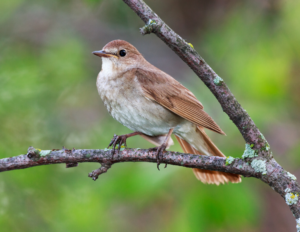 The River Adur, long controlled using culverts, has been restored to its original state with remarkable results. Nightingales, turtle doves, all five UK species of owl and purple emperor butterflies are just a few of the species, some critically endangered, that are resident on the estate.
The River Adur, long controlled using culverts, has been restored to its original state with remarkable results. Nightingales, turtle doves, all five UK species of owl and purple emperor butterflies are just a few of the species, some critically endangered, that are resident on the estate.
An eco-tourism business – Knepp Safaris – is now a thriving concern, supported by the sales of meat from free-range animals. It is well worth putting on your ‘Top Ten’ places to visit once going out is the new norm!
‘Wilding’ is a book that records the positive journey towards fundamental environmental change. The speed at which nature regenerates when left to its own devices as shared here is extraordinary, as is the documented tenacity over time of owners who never lost sight of their vision, even when funding seemed unlikely and negativity was rife.
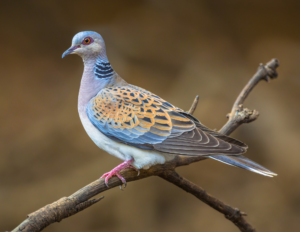 The descriptions of the sound of birds and insects took me back to my own 1960’s childhood in rural Surrey where we collected enough grasshoppers and crickets to fill a jam jar in minutes and when spotting frogspawn and tadpoles in ponds and puddles was a common occurrence
The descriptions of the sound of birds and insects took me back to my own 1960’s childhood in rural Surrey where we collected enough grasshoppers and crickets to fill a jam jar in minutes and when spotting frogspawn and tadpoles in ponds and puddles was a common occurrence
One of the most vociferous objections to the Knepp project was that it looked unkempt, due to the proliferation of weeds and scrub, leading to panic of spread to neighbouring farms. Relaxing the natural instinct to ‘control’ is a key lesson of the Knepp project, stimulating new strategies to achieve environmental and biodiversity goals.
Wilding provides for me and us all at Minerva an inspirational backdrop to our work in explaining and promoting the circular bioeconomy of wellbeing to support a healthier and more sustainable future.
Wilding is a ‘good’ read in all senses of the word. I and all Minerva colleagues commend it to you.
Further reading
Knepp Castle Estate Website https://knepp.co.uk/home
Vera, F. W. M. Grazing Ecology and Forest History (CABI Publishing, 2000)
Wohlleben, Peter. The Hidden Life of Trees – what they feel, how they communicate (Greystone Books, Canada, 2026)
Monbiot, George. Feral – searching for enchantment on the frontiers of rewilding (Allen Lane, 2013)
Rewilding Britain https://www.rewildingbritain.org.uk/?gclid=CjwKCAjwqpP2BRBTEiwAfpiD-508By6tsfGmqHaKJhUH-iyr1H0Ld7NBcJ8hHJ69rLw
Traditional, small-scale farming driven by passion and preservation
Bringing practical sustainability experience to the Minerva team
By Amanda Beard
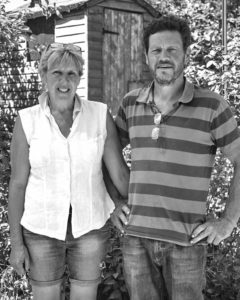
I have always been passionate about food and with so many horrifying stories appearing in the media about intensive farming and the detrimental effects food production can have on our planet, I wanted to gain practical experience of growing food and rearing my own animals.
It was this interest and passion that drew me to Oaktrack, a traditional three-acre smallholding in the heart of Hampshire, where I work on a part-time basis alongside my work with Minerva. Run by husband and wife team, Tina & Jim Wells, the farm was a way of using their many years’ farming and horticulture experience to enable them to lead a self-sustained life for their own family, providing great tasting, quality food grown and reared with complete respect for nature. Nearly twenty years on this aim is still at the heart of what they do.
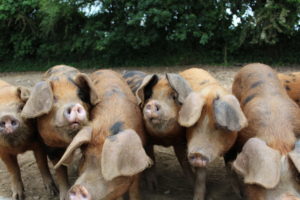 Specialising in native Oxford, Sandy and Blacks, the pigs are kept on the smallholding, living outside with plenty of space to roam. The sows farrow in arks and the piglets, once weaned at around eight weeks, are left in their groups to root and forage, preparing the ground for next year’s vegetable crops. Breeding and rearing on a small scale such as this, means the animals get extra attention, in stark contrast to many industrial farms.
Specialising in native Oxford, Sandy and Blacks, the pigs are kept on the smallholding, living outside with plenty of space to roam. The sows farrow in arks and the piglets, once weaned at around eight weeks, are left in their groups to root and forage, preparing the ground for next year’s vegetable crops. Breeding and rearing on a small scale such as this, means the animals get extra attention, in stark contrast to many industrial farms.
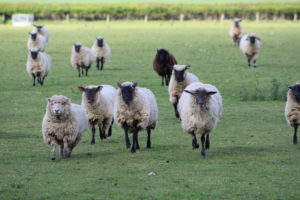 As well as pigs, Oaktrack breeds and rears a mixed flock of sheep – namely Llanwenog crosses and pedigree Shetlands. They graze on several sites in and around the local parish, living a natural life reared outside on a diet of grass and other leafy matter. They are only brought back onto the smallholding for lambing so that a closer eye can be kept on them. Living in this way helps the animals build up their own immunities and thus minimises the need for antibiotics.
As well as pigs, Oaktrack breeds and rears a mixed flock of sheep – namely Llanwenog crosses and pedigree Shetlands. They graze on several sites in and around the local parish, living a natural life reared outside on a diet of grass and other leafy matter. They are only brought back onto the smallholding for lambing so that a closer eye can be kept on them. Living in this way helps the animals build up their own immunities and thus minimises the need for antibiotics.
Tina and Jim also raise Irish Moiled and Belted Galloway cattle which are bought from a local farm as weaned calves. Having secured conservation grazing on a local water meadow, the cattle are left to grow and mature slowly, roaming freely amongst the walkers and surrounding wildlife. They also keep a variety of different types of poultry solely for the purpose of their delicious free-range eggs.
With all the animals, Tina and Jim adopt a nose to tail policy using as much of the animal as possible, for example, selling fleeces, offal for pet food and cowhide rugs.
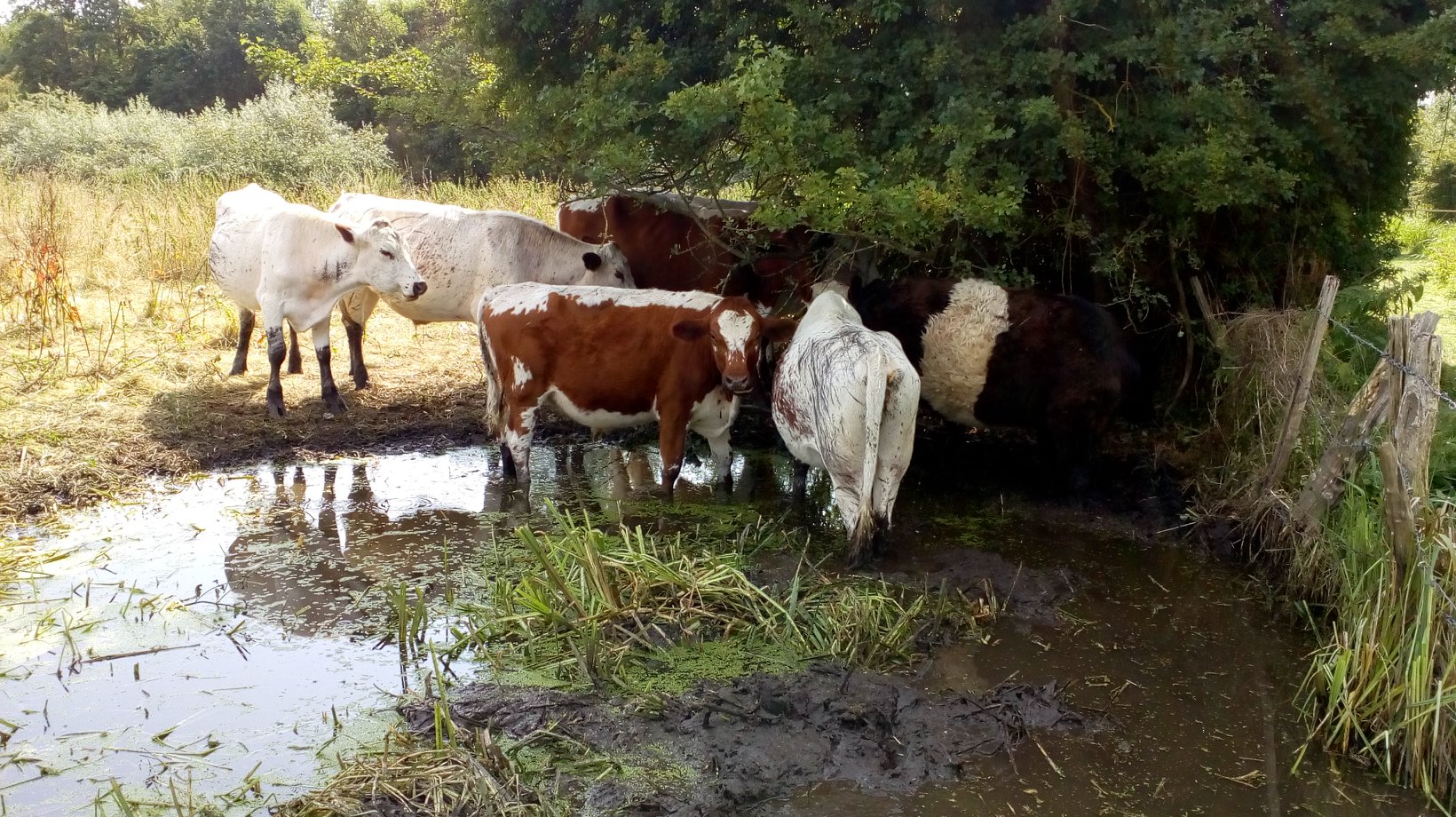
As well as rearing livestock, Oaktrack dedicates part of its land to growing fruit, vegetables, herbs and cut flowers, all fertilised using the dung from the animals to improve nutrients within the soil. The fresh produce is sold, along with the free-range meat and eggs, through the farm shop on site and a proportion is preserved, being made into jams, jellies, chutneys, pickles or juices. There is little to no waste as any additional surplus raw fruit and vegetables are given to the livestock to enjoy.
With a view to passing on their passion for farming and concern about its long-term sustainability, Tina and Jim also organise various open days, workshops and educational talks throughout the year giving people the opportunity to visit the farm and get involved in hands on activities around the farm.
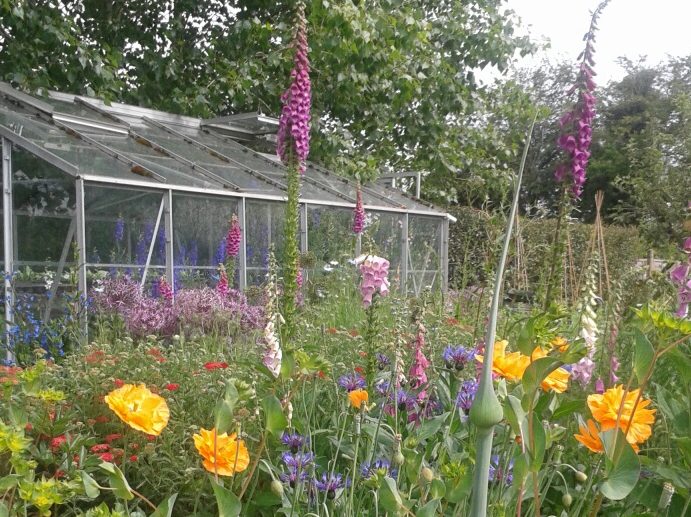
I may not be in a position to start my own smallholding right now, but this invaluable experience and learning from Tina and Jim has inspired me to start my own small vegetable patch at home, eat more seasonally and be more discerning in my food choices. In this way, hopefully I will be able to help ensure the continued long-term sustainability of small-scale farms such as Oaktrack, who farm with such passion and in a way which both the animals and land deserve.
My work and experience with Minerva are enabling me to develop my marketing and communication skills in the context of the projects and clients we manage, but also supports Oaktrack in delivering its business objectives.
For more information about Oaktrack visit www.oaktrack.co.uk
Mobilising communities to help save the planet
By Charlotte Reid
I have been concerned about protecting our planet ever since I was a teenager. First inspired by environmental abuses captured on film by frontline campaign groups in the 1980s, I’ve been committed to protecting our planet, and the creatures with which we share it, ever since. It was this interest and passion that drew me to Minerva – a communications company with a strong track record in environmental issues.
For many years now, study after study has warned of the urgent action necessary to tackle serious threats caused by climate change, deforestation, and intensive agriculture. Whilst I believe government action on a global scale is essential to enable us all to make better choices, I don’t think we can just sit back and wait for that to happen. We all need to get on and take positive action for ourselves to help safeguard the planet’s already over-stretched resources, before it’s too late.
It was this view that led me to get involved in setting up a new community group in the Hampshire village where I live. Called Sustainable Bourne Valley (SBV), the group was set up in January this year with the aim of mobilising our community to help protect the natural environment and to live more sustainably in Hampshire’s beautiful Bourne Valley.
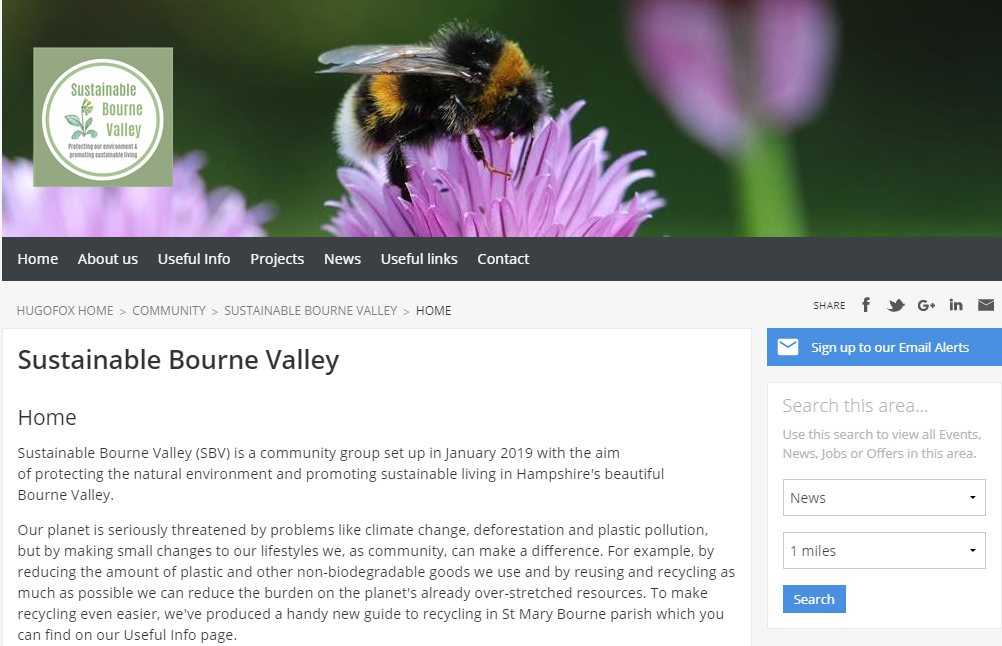
As well as sharing ideas and tips for local recycling and green living through a Facebook page and website, we’ve created a handy A-Z guide of what to do with a broad range of unwanted items – from cars and electrical goods to batteries and old clothes – which aren’t collected by Basingstoke and Deane Council. In its first month alone, SBV’s Facebook page attracted more than 150 supporters and has provided excellent links to other similar local groups.
In addition to promoting sustainable living, SBV is running its own hands-on projects to create spaces where wildlife can flourish unhindered. The first of these is called Hirst Meadow and our vision is that this haven will become an attractive, eco-friendly, colourful and, eventually, self-sustaining area that can be enjoyed by the whole community. It will also be used to showcase the sort of planting that can be done in any garden or community space to provide much needed habitat for many threatened native species such as bees, butterflies and farmland birds.
The land at Hirst Meadow is owned by St Mary Bourne Parish Council, which has kindly granted us permission to create this eco-friendly community space.
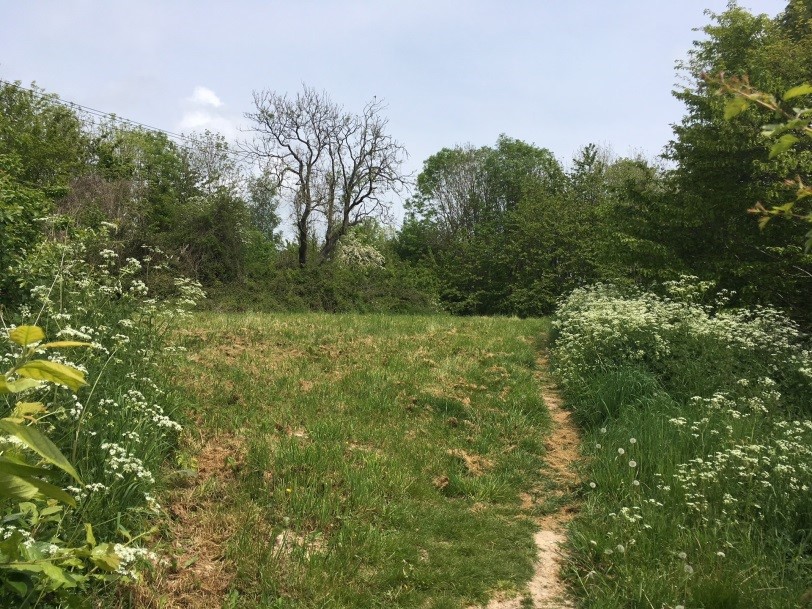
On the upper side of the plot (to the left of the natural path in the photo above) we plan to plant some small trees, like crab apple, rowan and hazel. In amongst the trees, which will host bird and bat boxes, woodland flowers such as bluebells and snowdrops will be planted. To the right of the path, we’re creating a wild flower meadow, adding to the beautiful wild flowers already established there. This side of the path will remain uncut during the summer months to allow the meadow to fully flourish.
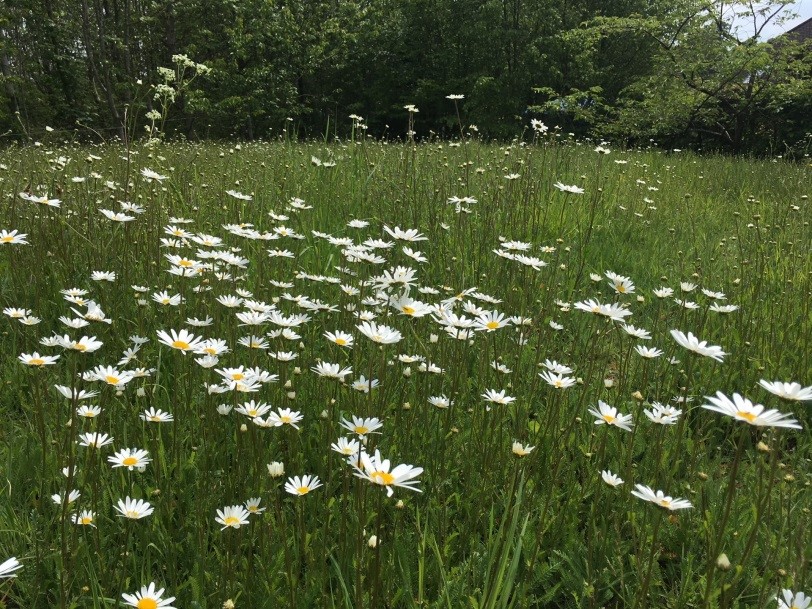
In the autumn, we plan to clear some of the brambles at the top of the site to create space for the tree planting. The Woodland Trust has a wonderful scheme that provides free tree packs for schools and communities so SBV is currently applying to the Trust to receive some young trees for planting in November.
We very much hope that the children from St Mary Bourne Primary School will be able to come along and help us plant the trees and, in doing so, will learn more about our project, the importance of taking care of our environment, and how to live more sustainably.
SBV may be a small drop in the ocean as far as saving the planet is concerned, but by working together as a community to support individual efforts, we’re helping to bring about significant, positive changes for the benefit of all.
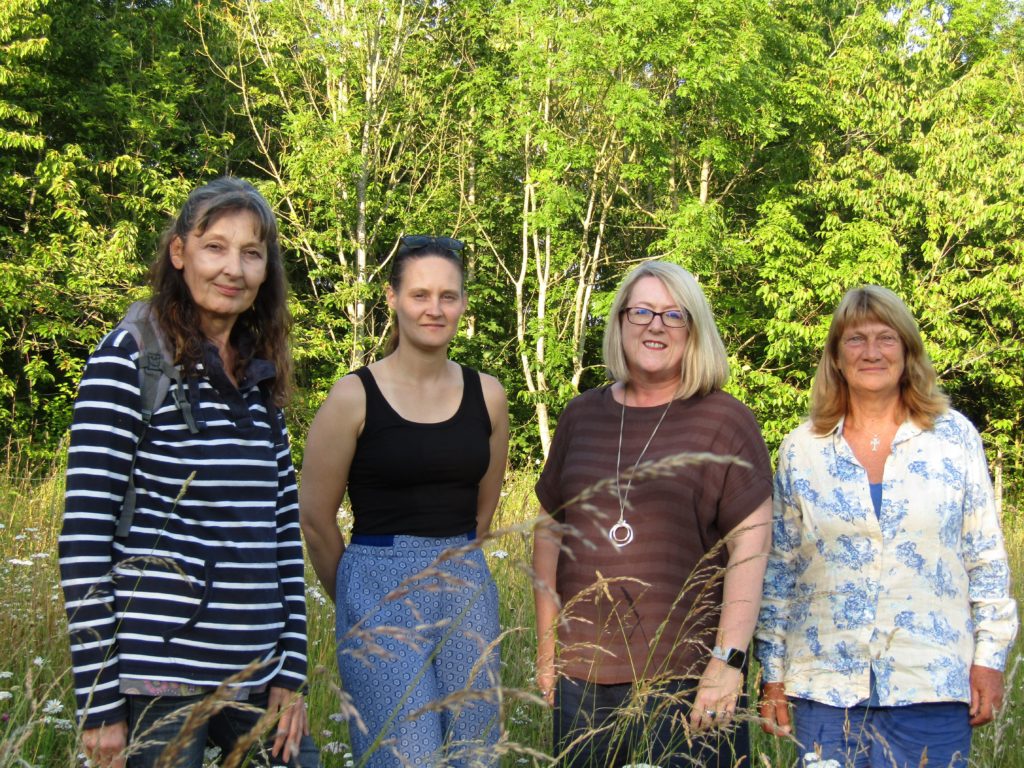
For more information about the group visit https://www.hugofox.com/community/sustainable-bourne-valley-15360/home/
May 2019

Getting My Foot in the Door
– Public Relations and Communications
Breaking the cycle of no experience, no job
By Mimi Saville
Getting a job in any industry presents challenges at all stages of your life and career, but when you are just starting on the employment ladder and have no direct (or indirect) experience of a particular area, your chance of getting an interview is slim.
Most jobs expect even young applicants to have at least one years’ relevant experience under their belt, with some jobs requiring a significantly wider range of experience for entry level roles.
If you have a degree or qualifications in a subject relevant to that industry, but no actual work experience, the chances are that you will be considered for the job due to your academic record, especially if the role is a junior or entry level position.
If you don’t have a relevant degree or qualifications – or any degree or qualifications – getting your foot in the door to get that necessary experience can be incredibly difficult and the circle of ‘no experience, no job; no job, no experience’ becomes hard to break.
When I finished university three years ago, I started looking for jobs with the intention of finding a career that I would enjoy and in which I could excel. Public Relations and Communications stood out to me as an area that would suit me both professionally and personally. However, I did not have a directly relevant degree, nor did I have any previous work experience in PR & Comms.
Although a lot of work experience roles were available in London, London was just not the right fit for me (personally or financially). So, I decided to start contacting local PR agencies as well as in house PR teams in local companies to simply figure out what PR jobs involved, and what the people in those teams did to get to their position.
I spoke to about 15 different teams in various areas of PR & Comms and met one team in person when they invited me to their office to chat and show me around. After a few different conversations with the director of that PR & Comms company – Minerva Communications UK – I was offered the chance to join the team for three months of work experience.
Almost three years later, my three months’ work experience has turned into a permanent job role. I am now an experienced Account Manager specialising in Online and Social Media communications. I have progressed my career with training and experience both ‘on the job’ and through specialist workshops and training events. I have had many opportunities to learn and expand my knowledge base and have worked with clients and partners across the UK, Europe and the world.
Minerva is now offering this same opportunity of a graduate work experience placement and is looking for interested candidates who would like to gain invaluable insights into Public Relations and Communications. Candidates do not need direct experience in PR & Comms but must be articulate, have writing and editing ability, and most importantly be keen and willing to learn on a day-to-day basis.
If this is something you are interested in, contact me!
Email: marie@minervacomms.net
Phone: 01264 326427
May 2018
10 things I have learnt in my first 10 months at Minerva
By Megan Crouch
1.It’s ok not to know how to do everything
The greatest struggle when starting at Minerva was not knowing how to do things. Being wildly independent I struggled with asking for help at first, before realising that this was obviously expected. I was brand new to PR and communications and of course to my colleagues. I hadn’t had 10 years in the industry or completed a master’s degree in journalism; I was fresh out of college and so eager to learn. I have learned so much in short time at Minerva and one of the most important things is that you need to listen and learn from those around you with more experience. Plus, colleagues in an office aren’t at all as they are portrayed in films; they’re so lovely and very helpful (even when you ask them the same question a million times because you are just so confused!).
2.Press releases are an art form
The order of information in a press release and articles is crucial – key info at the top, a little more information, throw in a quote or two, add some more information and give people somewhere to go for further information (although achieving that is often easier said than done). I notice all the time now how an article is set out- when reading the paper, I’ll only read the first few paragraphs, as in reality the rest is just ‘extra padding’.
3.Time management is key
You can easily spend hours and hours perfecting graphics and videos but at the end of the day there will always be something more you could add or something else you can change, so time management is vital. Write lists of what you have to do with deadlines besides each task and try to keep to them. I now find it oddly satisfying writing lists! Even though it may take time, in the long term it saves a lot of stress and last-minute panicking…
4.Prioritising the workload also reduces stress
Understanding the importance of each task is vital. We prioritise things in our lives every day, planning days out around when and where you can eat, prioritising your new favourite Netflix binge over the gym workout you promised yourself. Why does it always seem so much more difficult at work? I was naive when I first came to Minerva, thinking PR was all about playing around on social media, editing videos and writing news stories. In fact, research behind projects, stories, tweets and organisation of events is vital and time consuming, taking up a lot more of the day than I expected. I now prioritise the items on the lists make, in order of importance. The feeling of accomplishment when a box is finally ticked is just something else!
5.Knowing the right people is vital
Having lived in my village since I was born and working in local pubs for a good few years I always get laughed at for being the person who knows everyone. In this industry, knowing people, the right people, is crucial and having been in the business for 20+ years I suppose it is the same in communications for Rhonda, Director of Minerva, in communications as it is for me in my village! Rhonda honestly knows everyone. Quite literally any sector of any project she has knowledge about and knows at least one person who will be hugely beneficial – which always comes in handy! From an expert in insects, to science journalists or even a handyman – Rhonda’s years of networking means she always knows someone who can help – or at least that’s how effortless it looks from my perspective!
6.Social media isn’t everything
As a 19-year-old girl I can assure you social media is in fact everything to me. Google tells me that the average time spent on social media per day is approximately 116 minutes – that’s an average of 6 years over your lifetime. Sadly, I can probably corroborate that. In terms of PR, social media does play a huge role in the dissemination of information about projects, book launches or events. However, traditional media such as broadcast, and newspapers are still major players and are not to be forgotten. The power of storytelling is immense and in my personal opinion, reading an emotive piece about how livestock production affects the penguins of the world would have a much greater effect on me than a tweet I can just scroll past quite easily to get to the next hilarious video of a goat or llama. Therefore, I have learnt that taking the time in the mornings to read through the newspaper and check the BBC is just as important, if not more so, than checking my Instagram followers (2,223 as of this morning FYI). Plus, when you see an article that you played even the slightest role in creating appear in a newspaper you literally get little butterflies…
7.Twitter spellcheck is near impossible- but crucial
It’s hard to edit your copy down to the shortest of character counts, while making sure it still actually makes sense. Checking, checking and checking again is crucial to the production of a perfect news article, document or the shortest tweet. I find it so challenging when writing lengthy hashtags, such as #storytellingweek, #saveourantibiotics or #makeadifferencetoday, to ensure every word is spelt correctly. To me it just looks like a huge jumble of letters and when you are using the hashtag for the specific reason of reaching the wider audience, spelling it incorrectly has consequences. As well as not being able to reach the right audience, spelling mistakes can also alter the actual meaning of a word too. For example, the current project I’m working on has delivered some quite comedic errors which – fortunately – have been picked up in the checking process by others – and luckily before they were posted on social media! My y most common mistake is #briantraining instead of #braintraining – this doesn’t exactly work well as it’s not every day you train your Brian – unless the puppy you recently brought home is called Brian!
8.You never know when a photo-op will crop up!
At Minerva, we never miss a good opportunity to take a picture, be it International Women’s Day when we celebrate the women who changed our nation, or when we have attended a conference or event. So, with that in mind I’ve learnt never to have that extra 5 minutes of sleep, carry around a little powder with you and always double check you’ve rubbed your makeup in right in the first place (I’ve learnt that the hard way). Photos have the power to tell stories, share information and create a huge impact on audiences without a single bit of copy alongside them. Never discount the power of a photograph.
9.Taking a break away from the screen is perfectly acceptable
A lot of PR revolves around researching, planning schedules for social media and writing press releases which can leave your eyes burning a little after staring at the screen for too long! Don’t get me wrong, I love it, but sometimes your brain needs a little break from black and white text, some fresh air and (very rare) sunshine to take your mind away from all the information fizzing around inside it. Returning to the screen after a break can honestly feel like the equivalent of a quick nap – satisfyingly refreshing!
10.Have fun and enjoy what you’re doing – everyone else will see it and enjoy it too
Everyone at Minerva is truly passionate about the projects we work on and works hard to make them successful and make a difference within society. I enjoy being creative, making videos, creating graphics and putting together interesting new tweets to catch the eye of Twitter users. I like being able to see an end product as it gives me motivation to want to achieve more. I delight in seeing articles I have played a part in being published and that makes me motivated to continue. I see that in everyone else here too. We all share our work with one another, helping each other along the way, knowing each other’s strengths and weaknesses. Usually our final creations are pretty spectacular, creating impact and reaching our targeted audiences. We all enjoy what we do and endeavour to achieve the best possible results for our clients, and to deliver maximum impact that advances the social good.
August 2017
Path to the Future …
Meg is gathering experiences to help her decide which path leads to her future
By Megan Crouch
The path to my future is one that’s not yet completely decided, but it wasn’t always that way. Since I was young I wanted to be a speech therapist as it was a field that always fascinated me. As a chatterbox, I found it heart breaking how some struggle to do every day that which I take for granted.
Through school and the start of college this was my only goal, until one day my English Lecturer sat me down and made me realise that with every dream in life there is more than one way to make it a reality. With speech therapy still my end goal and university set firmly in my mind, I started my research mission. I found that I could be a speech therapist by doing English at University rather than doing a Speech and Language Therapist degree. This would open my doors wider if my mind veers away from speech therapy in the future. It didn’t just stop there. I then saw all the other directions you can go by completing an English degree: journalism, forensic linguistics, primary school teacher. That’s when my brain cells started to scream at me just to stop looking as every single job I came across resulted in “yeah I could see myself doing that” which is obviously a problem.
So, I decided to take a gap year to decide what I wanted my goal to be.
That’s where Minerva came in. I spoke to Rhonda, Director of Minerva, and told her that I literally wanted to do everything imaginable. I like to set myself a good old, completely unreachable challenge in a ridiculous amount of time, so I knew I was going to fit everything I possibly could into the next 15 months as I could. Of course, don’t forget it’s a gap year as well so I’ve got some completely crazy probably irrational travel plans too – but I get told again and again it’s what you’re supposed to do at 18, so I will…
My first day at Minerva blew my mind – to say it was different to what I expected is an understatement. I’m 18 years old and have only ever worked at my local village pub, walking through big office doors was something very new for me. It was one of the most daunting things I’ve ever done. I couldn’t say why but I imagined walking into a room, a bit like classrooms with rows and rows of desks with people dressed in formal suits ties, neatly done up, sat tapping away at a computer. It was not like that one bit.
I started off my morning fretting about what to wear, then couldn’t work out how to get into the office block. Upon finding Reception I felt some slight relief when Wendy on the desk was a very familiar face from my job at the pub – small world! “One of the Minerva team will be down to get you” she said, immediately setting my mind at rest that I wouldn’t be hopelessly wandering corridors alone. Greeted by a bubbly face off we went down the corridor past all the big scary offices- now they just seem normal but it was my first day so I was bound to find them petrifying!
Winding up the stairs and down a hallway we reached the Minerva offices and I could feel my heart pounding just that little bit faster than normal. I stepped into a cosy looking office with stacks of biscuits to my left (spotting my favourite chocolate fingers almost immediately) and an array of smiley people sat in front of me, I could feel my once racing heart smiling back. As I was being introduced to everyone I consciously struggled to hide the fact I was completely overexcited about being in a ‘proper’ office for the first time. I sat down on one of those swirly office chairs you were never allowed to play with at school and that just topped my morning off after being there for less than five minutes.
Just a few hours into my first day I was scrolling through data bases completely astonished at seeing email addresses for National Geographic magazine, The Guardian and BBC News editors. I couldn’t believe my luck!
Now six weeks in, I feel truly welcomed into the team and already in such a short space of time I have learnt so much more than I could have ever imagined. The experience I am gaining here is invaluable, surrounded as I am by people from all sorts of backgrounds. I’m writing, researching and even tweeting about some incredibly interesting topics. I feel privileged to be able to see what really goes on in the background of all these amazing projects, which is definitely not as straight forward as I thought. Surprisingly, there is a lot that goes on behind just one ‘simple’ tweet or press release.
In the short time I have been at Minerva, I’ve grown a lot as a person. Nearly every day I’ve learnt how to use a different piece of software, or learnt about a new topic. I’ve started to develop my skills in writing to fit a variety of different audiences from all walks of life, whether professionals or the wider public, as well as learning to adapt to the hugely varied tasks throughout the day, all so very different. I can’t wait to learn even more – a cliché I know, but true!
The path to my future is definitely still in the construction phase, as the more I’m learning and enjoying the more I’m questioning my choice of end goal. However, here at Minerva I am thoroughly enjoying being on that path with its intriguing signposts and potential diversions.
April 2017
Why must society wait for disaster to trigger rapid change?
By Marie Saville
A newly published study “How did we do that? The possibility of rapid transition” has shown that humans possess the ability to make rapid societal change when faced with disaster. The study, published by the New Weather Institute and the STEPS Centre funded by the UK’s Economic and Social Research Council, draws from events throughout history to demonstrate that society, when put under pressure by disasters, is capable of making the significant changes needed to alter the world around us.
Andrew Simms and Peter Newell, the two British authors, use historical examples of natural, social and economic disasters to show how these moments of intense pressure bring about radical shifts in society. According to the authors, the economic recession in 1930s America saw positive changes such as a drop in income inequality, improvement in gender equality, a major programme of new public housing, and significant environmental reforms.
In another example, the recent eruption of the Icelandic volcano, Eyjafjallajökull, (had to spell check that one!) brought northern European air traffic to a standstill. This forced businesses and individuals to adapt instantaneously and saw little to no short term effects on anything other than the Icelandic tourist industry! People simply adapted and reduced their reliance on carbon intensive air travel.
Current society is “locked into a high-carbon global economy” by energy-intensive infrastructure, a high-consumption culture, unequal distribution of political power and an economic system that takes growth for granted. This, in combination with various mind-set and attitude barriers, makes it seem near impossible for society as a whole to see a clear way to clean up the mess we currently face. Will it take a major disaster to wake us up? Let’s hope not.
This study proves that society is the ultimate procrastinator. The “why do today what can be done tomorrow” approach is best left for student essays and cleaning cars – society cannot afford to have this blasé attitude when ‘doing today’ will save tomorrow.
The message from this study is clear. History shows that we are more than capable of making radical positive change, so we must push on with socially progressive, rapid transitions before disaster strikes and before we are forced into action by catastrophic conditions.
Step forward Bioeconomy Researchers and their projects – their time is now!
See the study here – https://www.newweather.org/wp-content/uploads/2017/04/How_Did_We_Do_That_WEB.pdf
See the Climate News Network article here – http://mailchi.mp/climatenewsnetwork/humans-better-at-rapid-change-than-we-think?e=f815e1e972
See the New Weather blog here – https://www.newweather.org/2017/04/24/new-study-how-did-we-do-that-the-possibility-of-rapid-transition/
July 2016
Seeing Science: A Bird’s-Eye View
by Mikhaela Neequaye
I am a scientist. I think? No I am, I am a scientist. Let’s say I’m a scientist with reservations (I still don’t quite believe it myself). Specifically, if you want the facts, I am a first year PhD student, co-supervised between The Institute of Food Research and the John Innes Centre working on Beneforté ‘super-broccoli’. If you really want the facts, I’m working on uncovering the genetic control of sulphur metabolism in Brassica oleracea (oo-er!)
The thing to remember, and the thing that can be quite a shock at the start, is there’s more to being a scientist than planning and executing experiments. The reason why I chose the PhD project I’m doing, working on ‘super broccoli’, is because the aspects of research that have always fascinated me, are the ones with direct application. There’s nothing more infuriating to me than the concept of a researcher committing their heart and soul to their work, producing fantastic and fascinating results and then having that culminate to nothing more than a paper that falls into the pits of the ever-increasing mountain of academic papers published regularly (50 million since records began!), only to be recognised by members of their own, very niche community. Grrrrr. The best part about research is being able to change our perspective of the world around us, finding something out or developing something new and having an impact. You may find yourself wondering, as I often have, how exactly does one transfer their research into application? How do you make a difference? It’s all well and good doing the research and generating the data, but how do you then translate it to the right channels?
This question was answered for me in November of last year when Rhonda Smith, founder and director of Minerva communications, came and gave a seminar at my research institute about communicating science (my favourite!). Turns out the answer is a ‘knowledge broker’ – don’t worry I didn’t quite get it at first either. What you need is someone that can take the information you’ve generated in your research and direct it towards the right channels, delivering it to the right person that can help you along with the next stages of the journey. And yes, there are next stages (I know!). It turns out, publishing a paper about your research is not, in fact, the end but actually just the beginning of the work reaching its full potential. As you can imagine, I was captivated. This seminar was then followed by a colleague and I having lunch with Rhonda, discussing her work, her background and her future projects, including ESOF 2016. From then I was sold, after a few emails, my internship was sorted, 12 weeks with Minerva in the run up to ESOF, delivery and follow up. Sorted.
So here I find myself, at Minerva communications, in the belly of the beast, way out of my depth. There are proper adults here, who do proper adult things. I am yet to spot an academic in their scruffies carrying an ungodly amount of concepts of the world in their head, and a mysterious stain on their shirt. This is all new. But as a scientist, I can tell you that new is brilliant, I live for it, and so far I am loving it. Actually, in many ways it is the same as starting your PhD
- Everyone around you has a wealth of experience and knowledge you’re desperately trying to absorb like a human sponge
- When everyone is talking some words are familiar and others (especially the acronyms) leave you looking like you may or may not have left the iron on before leaving the house
- You’re desperate to be given tasks and start doing things but then plunge into fear when you are actually left alone to get something done
I’m no stranger to acronyms; RNA, LC-MS, PCR … So why not take on a few more? New experiences and learning are all part of being an ESR right?
*looks to Kate and Edd on either side of me to confirm that ESR is being used in the right context and is what I think it is*
*receives nods of approval*
*mini self-fist-bump under the desk*
September 2015
The Great British Bake Off(ice)
By Maisie Smith
When I asked my new colleagues what exactly won me the job at Minerva, they were absolutely unanimous in their response. It wasn’t my hard-earned degree, my carefully-written CV, or even my dazzling people skills (although these all helped)… It was the fact that I offered to bake them cookies.
Baked goods and potential bribery aside, from the moment I knew I’d got the job I was excited to employ the skills I had gained as an English graduate. But I was also nervous about entering The World of Work. Since my previous summer jobs only involved waitressing, cleaning and/or folding A4 pieces of paper – yes, really – the concept of working full-time in an office felt way too grown-up and intimidating.
Fortunately, I needn’t have worried. The first question I was asked on arrival was how strong I liked my tea, sparking a debate on whether hot milky water really counts. (Note – it definitely doesn’t!)
I wasn’t sure what I expected, but my excitement really hasn’t abated yet. Maybe it’s the novelty of my shiny new notebook, or all the post-it notes I get to scribble – the biscuit tin immediately to my right certainly helps. But the projects genuinely interest me and as a lot of my tasks involve research, the more I discover, the more interesting I find it.
The team all have their own roles and seem to know exactly what they’re doing, but thankfully the whole situation is inspiring rather than intimidating… The fact that the latest blog post was titled “There Are No Stupid Questions” was also reassuring when I found myself asking what Minerva does, exactly. (The answer is: a lot of things.)
There’s a wonderful balance that means everyone takes the work seriously, but not themselves – speaking of which, it turns out the tea debate was only the beginning of the work ethic here. We also critique the baked goods brought in from home like it’s our own episode of the Great British Bake Off. (The words “nice even bake” and “beautifully moist” have never been said with such seriousness.) Thankfully my first batch of cherry and almond cookies passed muster, despite stiff competition from an excellent lemon drizzle cake, and the approval of my co-workers was won.
So far in my career here, as well as carrying out research, I’ve contributed to databases, sent out press releases, written reports, sent emails, designed flyers…and been sent out to pick up some proof copies of business cards, resulting in my shamefacedly ringing the office to admit I was lost en route. But nobody’s perfect, right? More importantly, I’ve loved it. Hopefully my innocent (or ignorant) enthusiasm makes up for minor details like getting lost on the same street as the office!
I can’t say it hasn’t been a bit of a learning curve – one client in particular was so difficult to get my head around, I’m still not entirely sure who they are, what they do or how we’re helping. (Whatever it is, I’m sure the team is doing it brilliantly and I’ll get to grips with it eventually – after all, I’ve only been here a few weeks.) But I’ve managed to absorb enough to have an intelligent-sounding to-do list on my desk, and even a vague idea of how I’m going to manage it all. After all, I have my own official Minerva diary, my own official Minerva flash drive, and a constant supply of tea – it can’t go too wrong. Or if it does, maybe I could bake something else as a distraction…anyone fancy a cupcake?
July 2015
There are no stupid questions…
By Kate Viggers
I confess to feeling slightly out of my depth at a press conference held during a recent research congress about the challenge of obesity in Europe.
Beyond the frog I dissected in GCSE Biology and numerous ticker-tape-trolley experiments conducted in physics lessons (the point of which I am still failing to grasp), I have little science background. Interesting, therefore, that I find myself working for a company specialising in healthcare and scientific communications! And occasionally daunting, when I find myself before a panel of leading health researchers and practitioners, surrounded by ‘proper’ science journalists from a variety of eminent publications.
Naturally, I felt the pressure to ask an ‘intelligent question’ that would a) get the experts thinking b) impress my media friends and c) wouldn’t betray my lack of knowledge.
There are no stupid questions, the saying goes. But we often reveal more about ourselves through the questions we ask than the answers we give. Take our recent company excursion to a local supplier’s premises, where the proprietor patiently fielded our team’s questions:
Me: “What’s the most stressful part of your job?”
Sarah: “How do you manage your stress?”
Edd: “You’ve identified the issues that cause you stress; have you put any processes in place to address them?”
No prizes for working out who’s the journalist, who’s studying to be a counsellor and which of us is an experienced project manager!
At a recent work dinner, I asked a friend/colleague (‘frolleague’?) who is studying for her philosophy doctorate, “Who’s your favourite philosopher?” A sudden hoot of laughter from Rhonda on the opposite side of the table; that, she informed me, was a ‘typical journalist’s question.’
In other words, a reductive question designed to draw out a simple fact as quickly as possible. I put it down to force of habit. I’ve spent years as a feature writer doing down-the-line interviews, attempting to distill a complicated personal experience into a few choice quotes (… and keep my phone bill down). Let your interviewee wander off topic by asking too many ‘open’ questions, or fail to ‘nudge’ them to share the information you really need, and you make your job harder; you’re left with pages of shorthand to decipher and work up into usable copy with a deadline looming. It’s even more important to be concise and efficient when you’re conducting numerous interviews for one assignment and need to combine multiple perspectives into one, well-written, flowing piece. A ‘favourite’ part of my job at Minerva is developing case studies – telling the ‘human story’ behind the complex issue our clients or projects need to communicate; my interview experience has been so useful for extracting the crucial detail to help us deliver that support.
Back to the press conference.
Just as the microphone is handed to me, I recall a conversation with a conference delegate the day before, which had thrown up an interesting question. It might not be about drug trials, control groups or methodologies –but it might get them thinking.
Paraphrasing the delegate, I asked the experts, “What would you say to someone who claimed that nobody really wants to solve the obesity crisis because everybody’s making too much money out of it?”
Two of the panel members visibly winced. I’m pretty sure all of them were insulted. The conference organiser approached me afterwards and said he was astonished by my ‘controversial question’.
Perhaps I should have just asked them, “Who’s your favourite scientist?”
May 2015
The Minerva team is bidding a fond farewell to our Junior Exec Emma Blackburn next month, as she prepares to start university in September. As a parting gift, she agreed to launch the Minerva Blog – thanks Emma!
Why working my gap year worked for me
By Emma Blackburn
My choice to take a gap year was a last minute, slightly unavoidable option due to a lack of accommodation at my chosen university. That said, it is one that I definitely do not regret.
To begin with, I had a few options for my year out: travelling, working a ski season or working in the UK. Travelling quickly became impractical; a lack of funds after two months abroad put an end to that! Working a ski season was an option for a few weeks, until I swiftly realised leaving my parents (and horse) for that long was not something I particularly wanted to do.
I found out about an opening at Minerva through Rhonda who, luckily, lives in the same village as me. After an informal chat we both decided to give it a trial run and I’ve been at Minerva ever since. It just goes to show, it’s not only what you know, it’s who you know!
Working in communications has been a career option for me since I was 15 and completed a week of work experience at a PR firm in London. At Minerva, my role as a junior account executive has allowed me to fulfil this and learn more about the industry whilst on the job. Saving money for university, gaining experience and building up contacts are just three advantages of working for Minerva through my gap year. I have also had the chance to work with amazing, lovely people who make my job fun and enjoyable.
My social media ‘expertise’ (garnered from too many evenings on Facebook and Twitter!) has brought ‘added value’ to the team here and I have developed our clients’ & projects’ social media profiles considerably. My filming and video-editing skills have also come in handy (you can watch an example here!)
For university and beyond – I have learnt to manage and prioritise my workload, meet deadlines, liaise with clients and have gained a valuable insight into the way a business is run. All of these new skills will help me during university and when applying for jobs in the future
Working throughout your gap year is not for everyone, parts of it are difficult – when all your friends come back from university and just want to party, but you have work the next day, for example. But, for anyone who wants to save some money, as well as create or explore career options, then I would personally recommend working through your year out – particularly to help with meeting the increasing costs of student life, and especially if you don’t want to live off beans and pasta!
Think you’ve got the right skills to be our new Junior Exec?
If like Emma you’re a gap year student looking for a worthwhile & rewarding position before you head off to university – or you’re a school leaver considering a career in communications & PR and have an interest in science – we’d love to hear from you. Call us today for a chat about our vacancy and the opportunities it can offer you.
August 2021
Elephants – megagardeners of the forest
Iconic species essential for biodiversity needs our help
By Rhonda Smith, Director, Minerva UK
August 2021
Elephants – megagardeners of the forest
Iconic species essential for biodiversity needs our help
By Rhonda Smith, Director, Minerva UK
